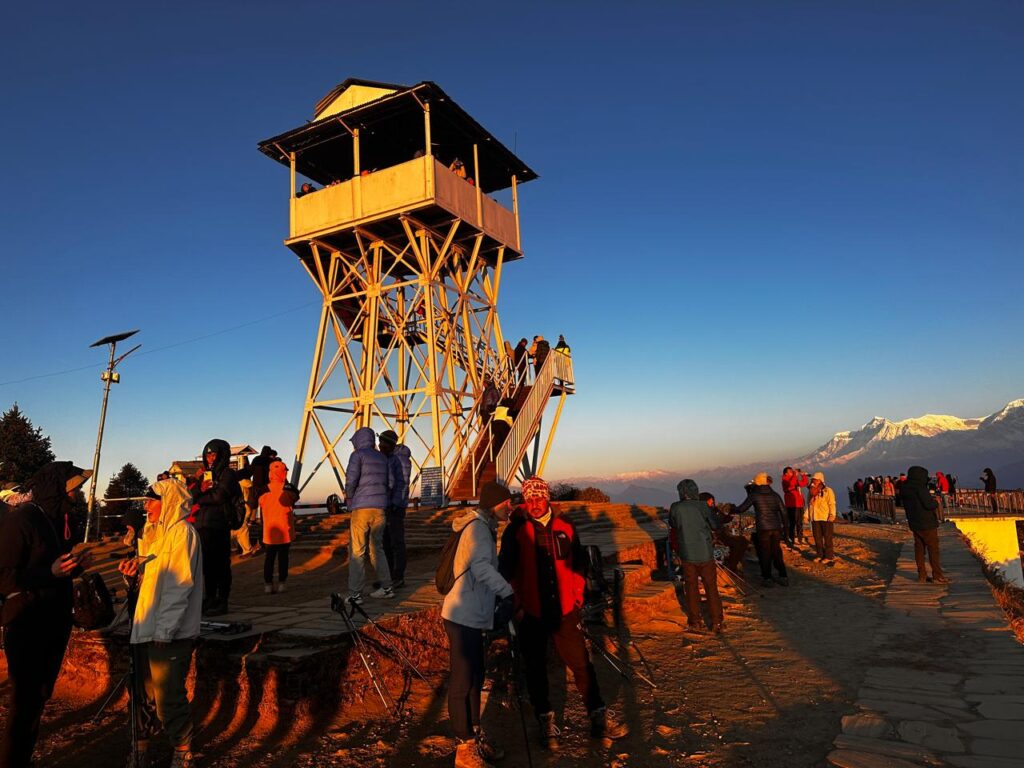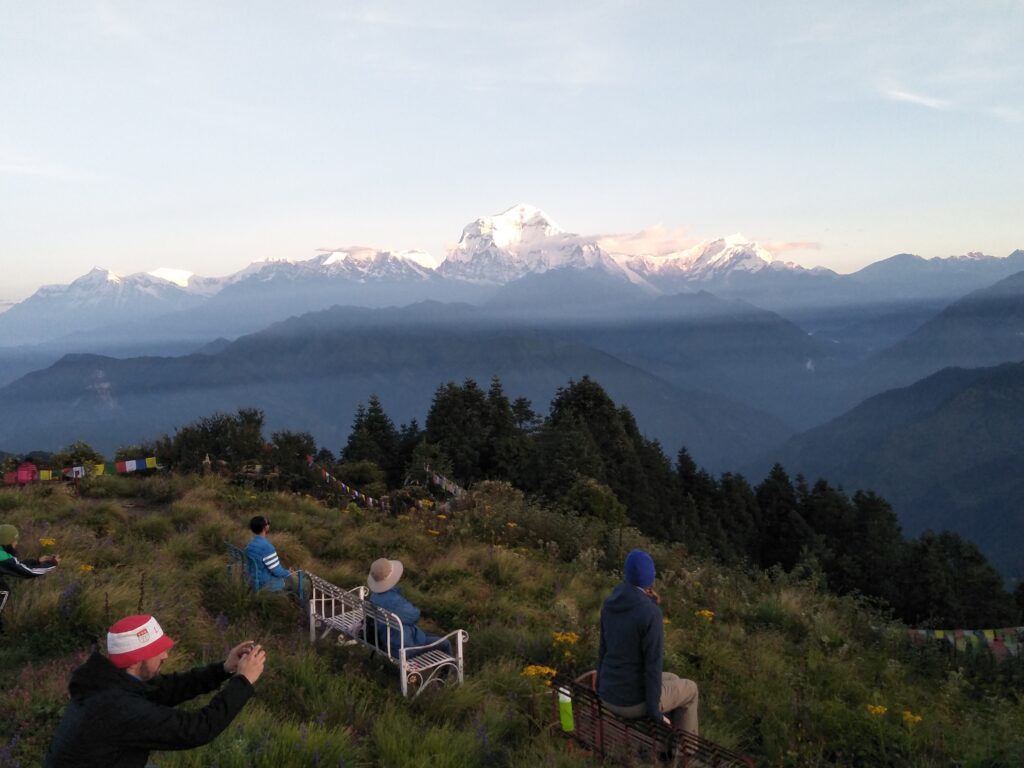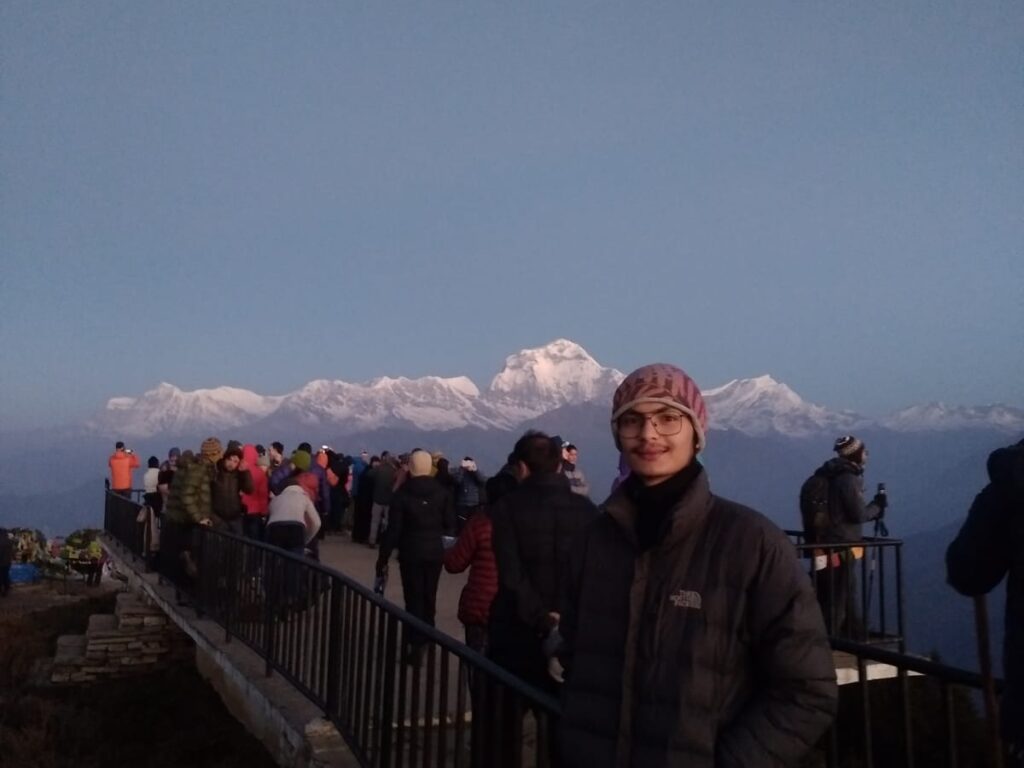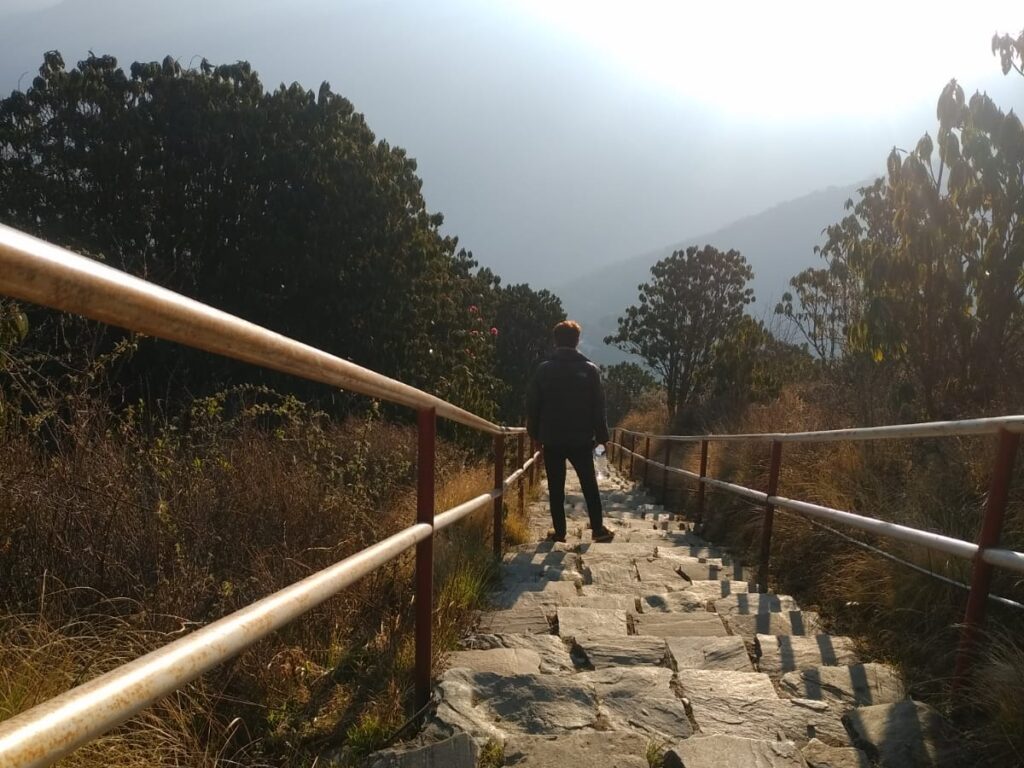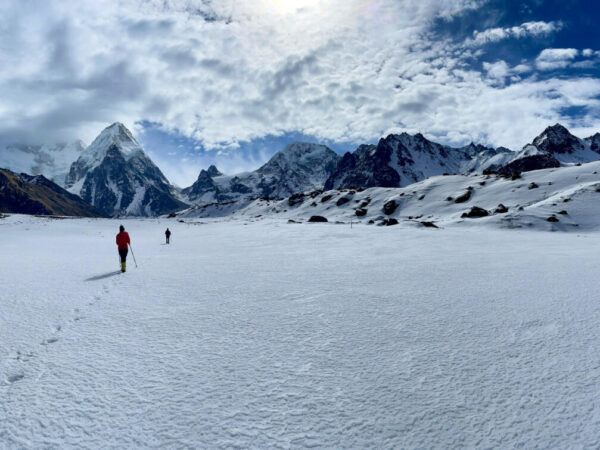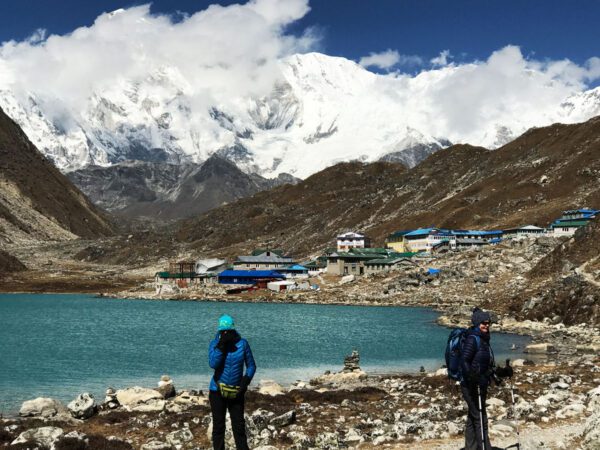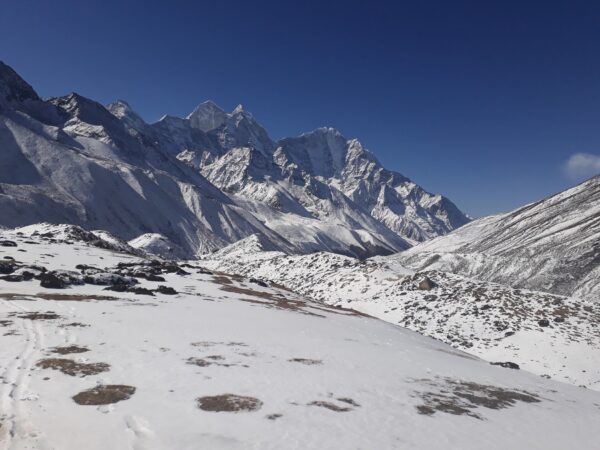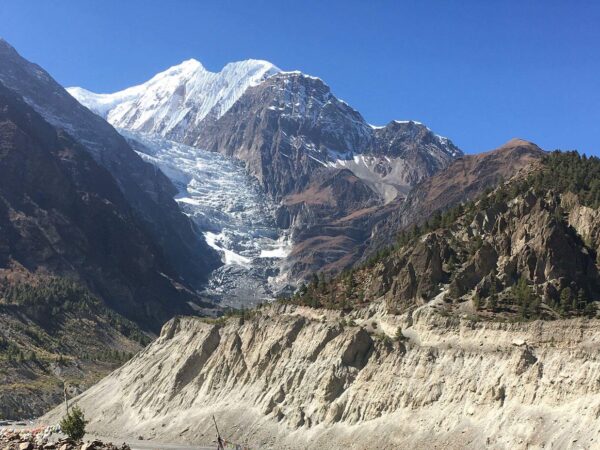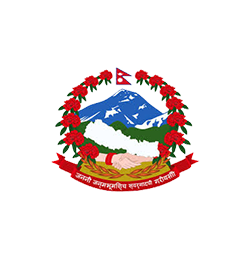- 1 - 1 pax USD$770
- 2 - 2 pax USD$670
- 3 - 6 pax USD$620
The Ghorepani Poon Hill Luxury Trek is the ultimate five‑day Himalayan taster: short on distance, long on wow‑factor. Beginning a two‑hour drive from Pokhara, the trail climbs stone stairways through terraced farms before slipping beneath towering rhododendron and oak. Each bend reveals fresh angles on the snow‑wrapped giants of the Annapurna massif, yet the real spectacle arrives at dawn on Day 3. A pre‑sunrise climb to 3,210 m places you atop Poon Hill just as the eastern sky ignites—within minutes, a 270‑degree mural of Dhaulagiri, Annapurna I, Annapurna South and the sacred fishtail of Machhapuchhre blooms in gold and crimson.
Culture is stitched into every step. Ulleri’s Magar villagers greet you with warm smiles and sweet chiya, while Ghandruk’s stone lanes showcase Gurung museums, prayer flags and melodic Buddhist chants drifting from hill‑side gompas. Lodges here are more than rest stops; they’re family homes serving steaming dal‑bhat, momos and apple pie fresh from wood‑fired ovens. Evenings end around a pot‑bellied stove swapping trail tales with locals and fellow trekkers.
Physically, the route is accessible to anyone who enjoys daily walks of four to six hours and carries a day‑pack. The highest overnight point, Ghorepani (2,850 m), keeps altitude risk low, making the trek popular with first‑timers, families and active seniors. Spring (March–May) bathes the forest in rhododendron blossom, while autumn (September–November) guarantees crystal skies—though the path is open year‑round for those seeking quiet winter trails.
Operated by Everest Hikes, the package includes permits, guide, porter, all mountain meals, comfortable teahouse accommodation and return transport from Pokhara, starting at just USD 345 for 2025/26. Whether you’re chasing sunrise photography, cultural immersion or simply a manageable taste of the Himalaya, Ghorepani – Poon Hill delivers an unforgettable blend of scenery, warmth and adventure.
Highlights
- Discover the best short treks in the Nepalese Himalayas.
- Wander through the Annapurna region’s enchanting landscapes, vibrant rhododendron forests, and traditional Gurung villages.
- Take in stunning views of the iconic Annapurna South and Machapuchare (Fishtail) peaks.
- Stay overnight in welcoming teahouses along the scenic trekking routes.
- Relax by the serene Phewa Lake in the beautiful lakeside city of Pokhara.
Why choose Ghorepani Poon Hill Luxury Trek?
- Panoramic sunrise at 3,210 m – watch the first light spill over Annapurna I, Dhaulagiri and Machhapuchhre from the famed Poon Hill lookout.
- A “beginner‑friendly” Himalayan trail – four relaxed hiking days, no technical sections, comfortable lodges all the way.
- Culture woven in – overnight in Gurung villages like Ulleri and Ghandruk, sample home‑style dal‑bhat and learn a few phrases of the local dialect.
- Rhododendron magic – in spring the forest ignites in red and pink; autumn brings crystal skies and postcard views.
- Perfect add‑on – the trek starts/ends in Pokhara, so you can kayak the lake or paraglide after your hike.
Ghorepani Poon Hill Luxury Trek Day‑by‑day at a glance
- Pokhara ➜ Birethanti ➜ Ulleri (2,100 m)
Drive 2 hrs; climb the famed stone steps to Ulleri. - Ulleri ➜ Ghorepani/Deurali (2,850 m)
Gentle ascent under giant rhododendrons, welcome tea with mountain views. - Sunrise on Poon Hill ➜ Tadapani (2,630 m)
Torch‑lit pre‑dawn hike (45 min) for the panorama, then descend through mossy forest. - Tadapani ➜ Ghandruk ➜ Landruk (1,565 m) ➜ Dhampus ➜ Pokhara
Stroll into picture‑perfect Ghandruk, lunch with Gurung hospitality, continue to Landruk.
Traverse terraced fields, drive back to the lakeside – evening free in Pokhara.
Outline Itinerary
Day 01: Fly to Pokhara (827m) & Drive to Ulleri (2,050m)
Day 02: Trek to Ghorepani (2,875m)
Day 03: Hike to Poon Hill (3,210m) & Trek to Tadapani (2,630m)
Day 04: Trek to Ghandruk (1,940m) & Drive to Pokhara (827m)
Ready to hike?
Send us your preferred dates and group size; we’ll confirm availability, permits and any custom add‑ons (private jeep upgrades, Kathmandu hotel, Chitwan safari, you name it).
If you have at least nine days to spend in the mountains, I highly recommend the Annapurna Base Camp Trek via Poon Hill.
Ghorepani Poon Hill Luxury Trek – 4 Days - Itinerary
Fly to Pokhara (827m) & Drive to Ulleri (2,050m)
Your journey kicks off with a quick and scenic flight from Kathmandu to the lakeside city of Pokhara. After landing, hop into a jeep and begin your drive through terraced hillsides and local villages, eventually climbing up a winding road to reach Ulleri, a cozy village perched at 2,050 meters. This is where your real mountain journey begins — surrounded by fresh air, peaceful vibes, and distant snowy peaks.
Trek to Ghorepani (2,875m)
Today’s trail is a beautiful blend of forest, waterfalls, and chirping birds. You’ll gradually ascend through rhododendron groves and stone staircases — passing charming villages like Banthanti and Nangethanti. Eventually, you’ll arrive in Ghorepani, a stunning village framed by towering mountains and known for its surreal sunsets and warm teahouses.
Hike to Poon Hill (3,210m) & Trek to Tadapani (2,630m)
Rise before the sun and take a short, uphill hike to Poon Hill, one of the best viewpoints in Nepal. From the top (3,210m), watch the mountains turn gold as the sun rises over Annapurna, Dhaulagiri, Machhapuchhre, and more — pure Himalayan magic! After breakfast back in Ghorepani, continue your trek through mossy forests and hidden trails until you reach Tadapani, nestled in a peaceful clearing among the trees.
Trek to Ghandruk (1,940m) & Drive to Pokhara (827m)
Your final trekking day takes you through ancient rhododendron forests, descending steadily toward Ghandruk, one of the most culturally rich Gurung villages in the region. Explore its stone streets, traditional homes, and enjoy your final mountain views. Then, drive back to Pokhara where a hot shower and lakeside dinner await you!
Inclusions
What's included
- International & Domestics Airport pick up and drop
- An Experience English speaking guide
- Kathmandu to Pokhara by Domastic Flight
- Pokhara - Ulleri and Ghandruk to Pokhara by private vehicle
- All required trekking permits (Annapurna Conservation Area Entry Fee and TIMS Card)
- All meals during the trek (breakfast, lunch and dinner)
- Teahouse accommodation during the trek (with attached bathroom) - provided best available teahouse/guesthouse
- Guide and porter insurance with food and accommodation
- Basic Medical kits
- Farewell dinner
- Emergency Helicopter Evacuation Service Arrangement Only (should cover by your travel insurance)
- Trekking poles and Duffel bag (if needed)
- All required paper works and government taxes
- Everest Hikes T-shirt
What's not included
- International Flight
- Nepal Travel Visa Fee
- Hotel in Kathmandu and Pokhara
- Personal Medical and Travel insurance (Should cover helicopter evacuation)
- Porter
- Guide, Porter and Driver tips
- Personal Gears (equipment)
- Personal bill
- Lunch and Dinner in Kathmandu
- All other personal expense of beverages (hard and soft drinks)
- All other things not mentioned in the inclusion
Accommodation & food in Ghorepani Poon Hill Luxury Trek
- Lodges/teahouses – clean twin rooms; private bathrooms available in many villages.
- Hot showers & Wi‑Fi – small surcharge in the mountains; included at our Pokhara hotel.
- Meals – choose from Nepali staples (dal‑bhat power!), pasta, fried rice, pancakes, momo dumplings and more. We cater for vegetarian, vegan and gluten‑free diets.
Who can join?
If you can comfortably walk 4‑6 hours with a light pack, you’re set. Families with children, active seniors and first‑time trekkers love this route. Altitude risk is minimal – we never sleep above 2,850 m.
What to pack?
- 40–50 L backpack & rain cover
- Broken‑in trekking shoes + camp sandals
- Light down or fleece jacket, warm hat & gloves (Nov–Feb)
- Quick‑dry shirts, trekking trousers/shorts, 2‑3 pairs socks
- Sun protection: hat, sunglasses, SPF 30 +
- Re‑usable water bottles (or hydration bladder)
- Headlamp, power bank, basic meds, personal snacks
- Optional: trekking poles, sleeping bag liner (blankets supplied), book/cards for evenings

